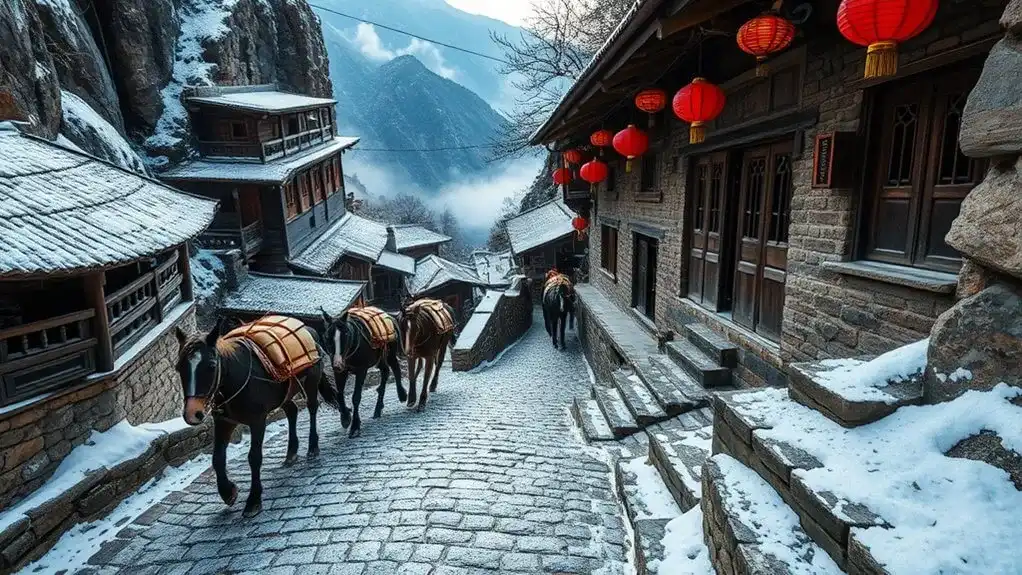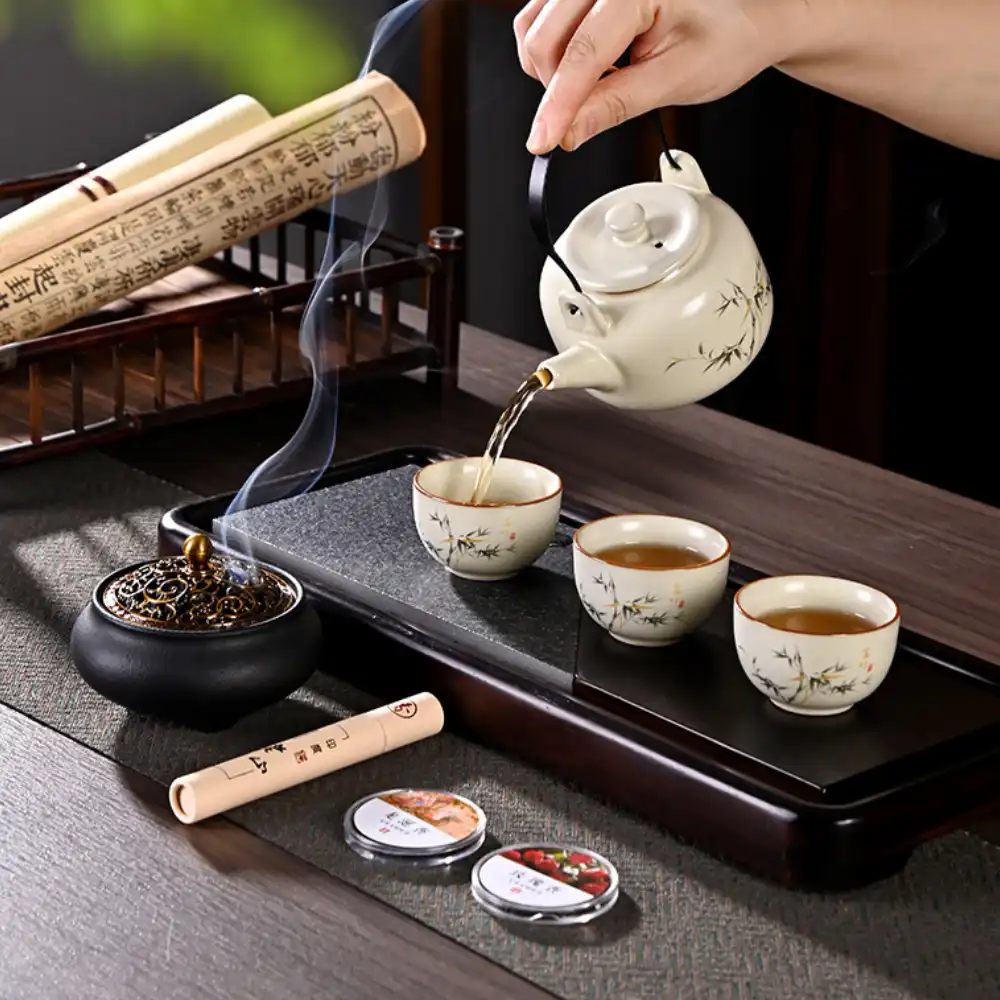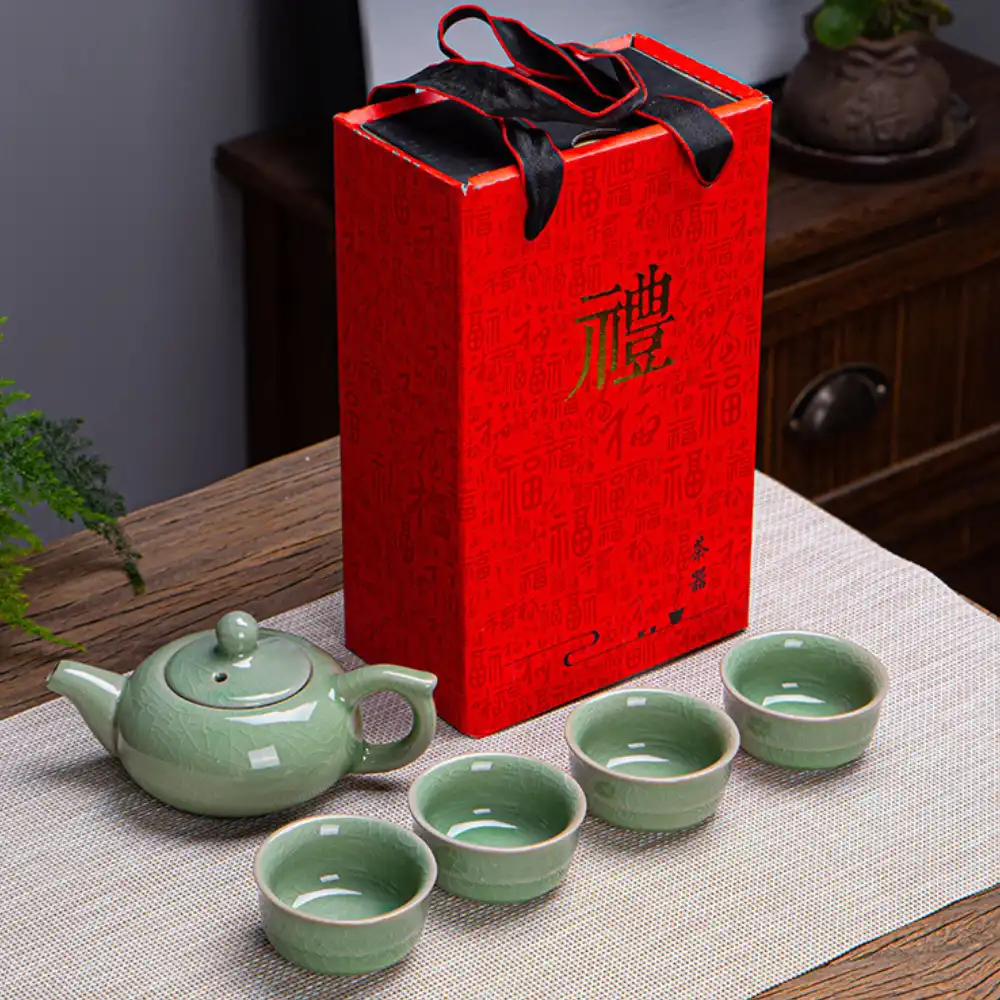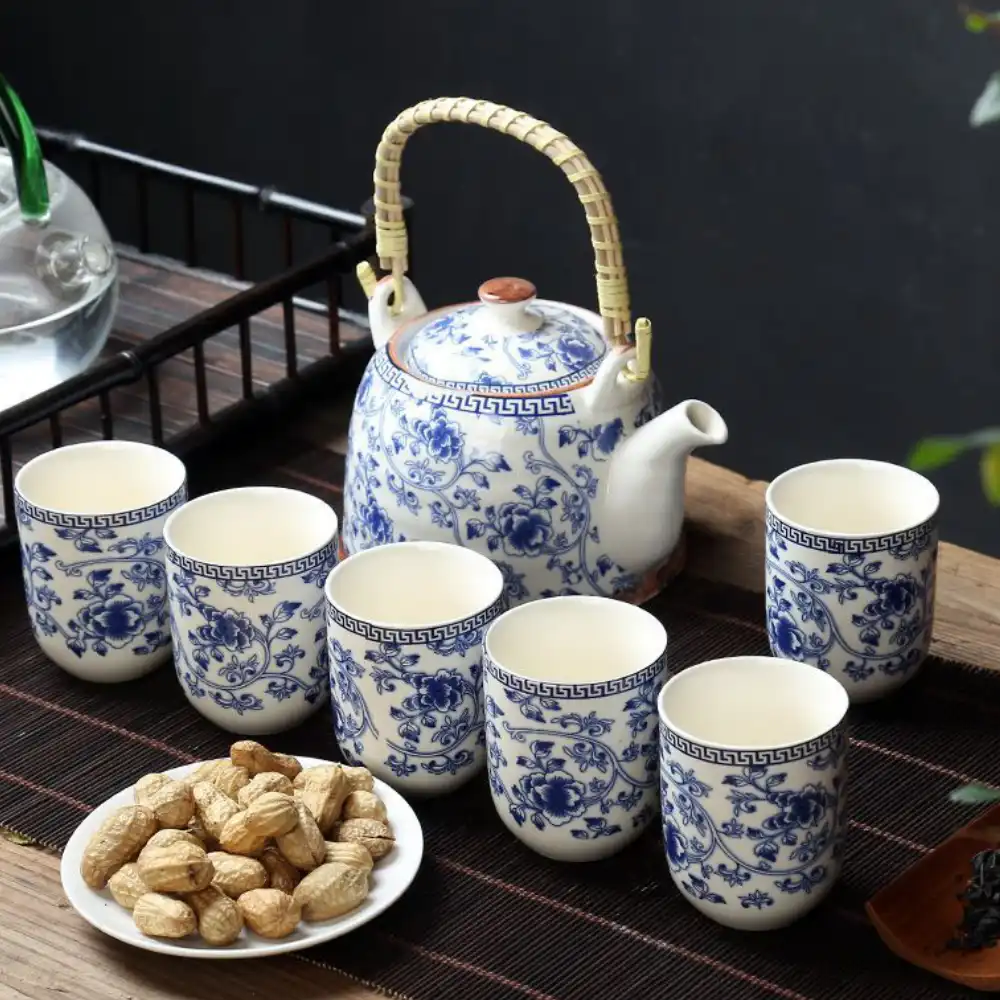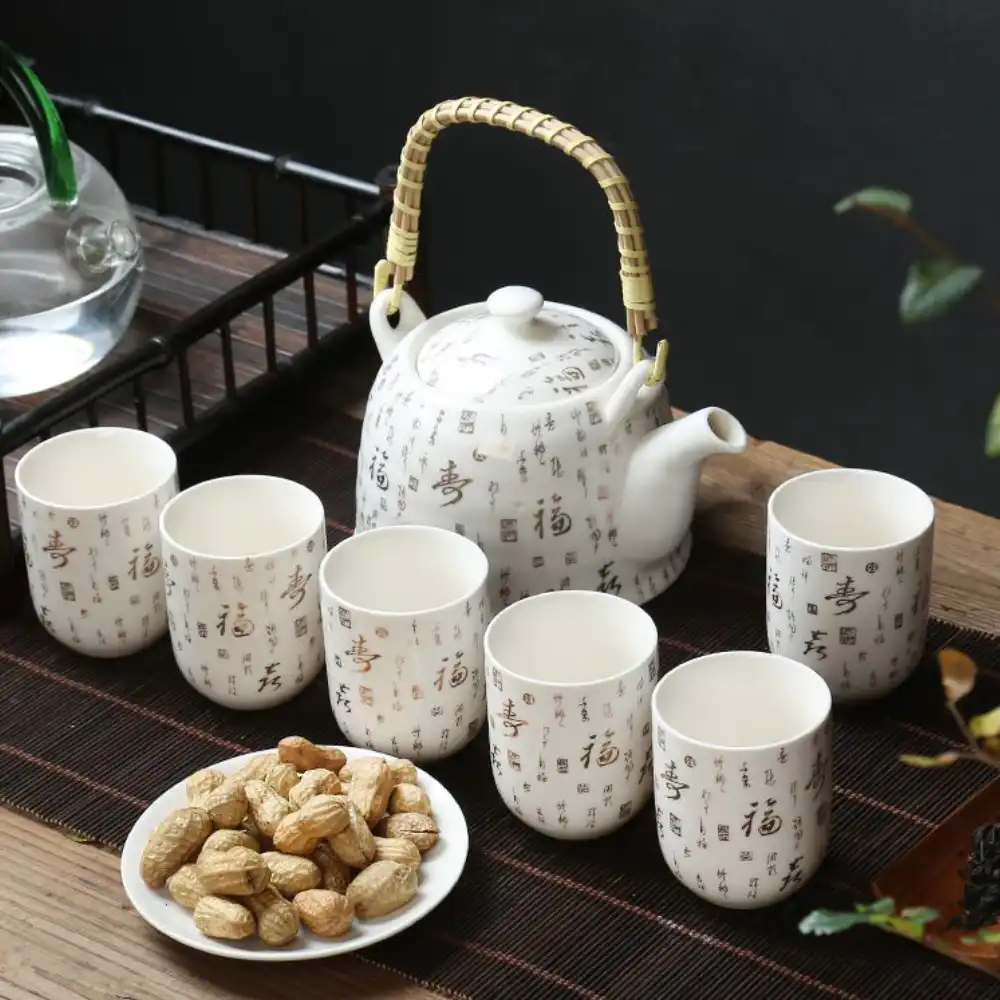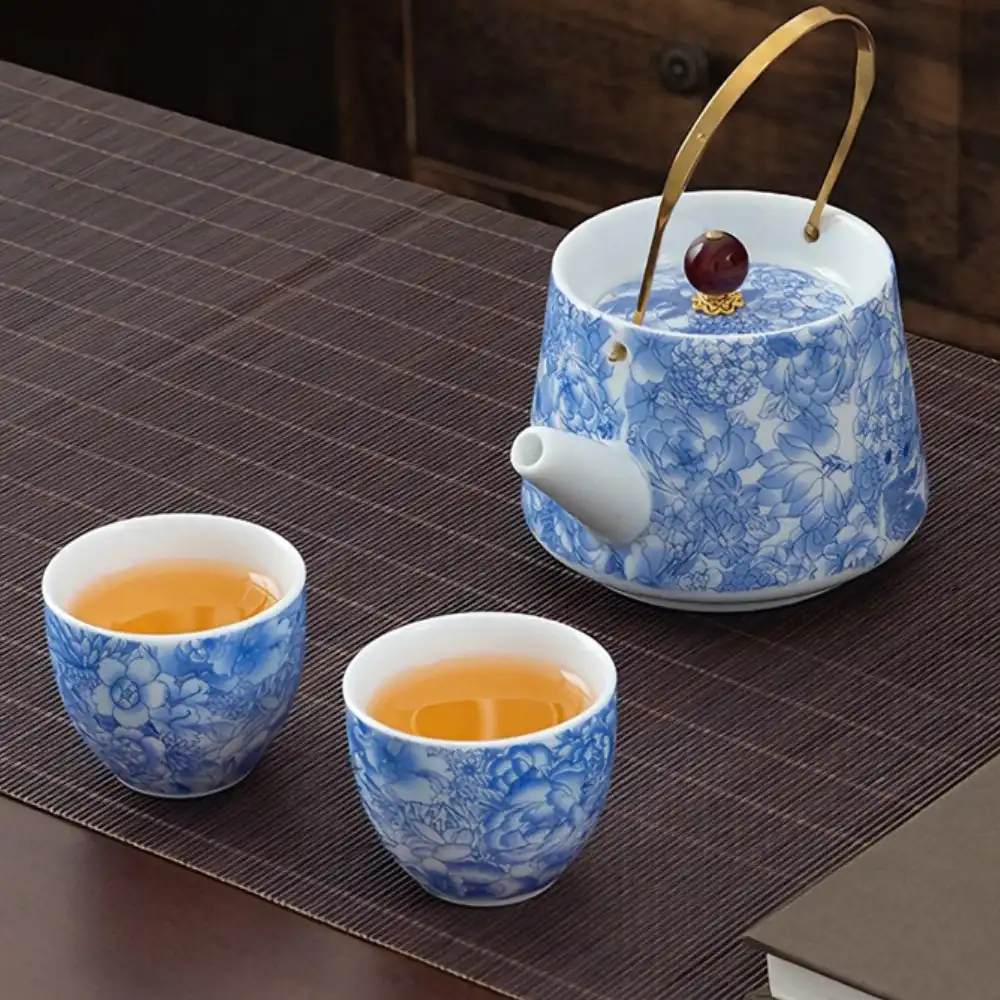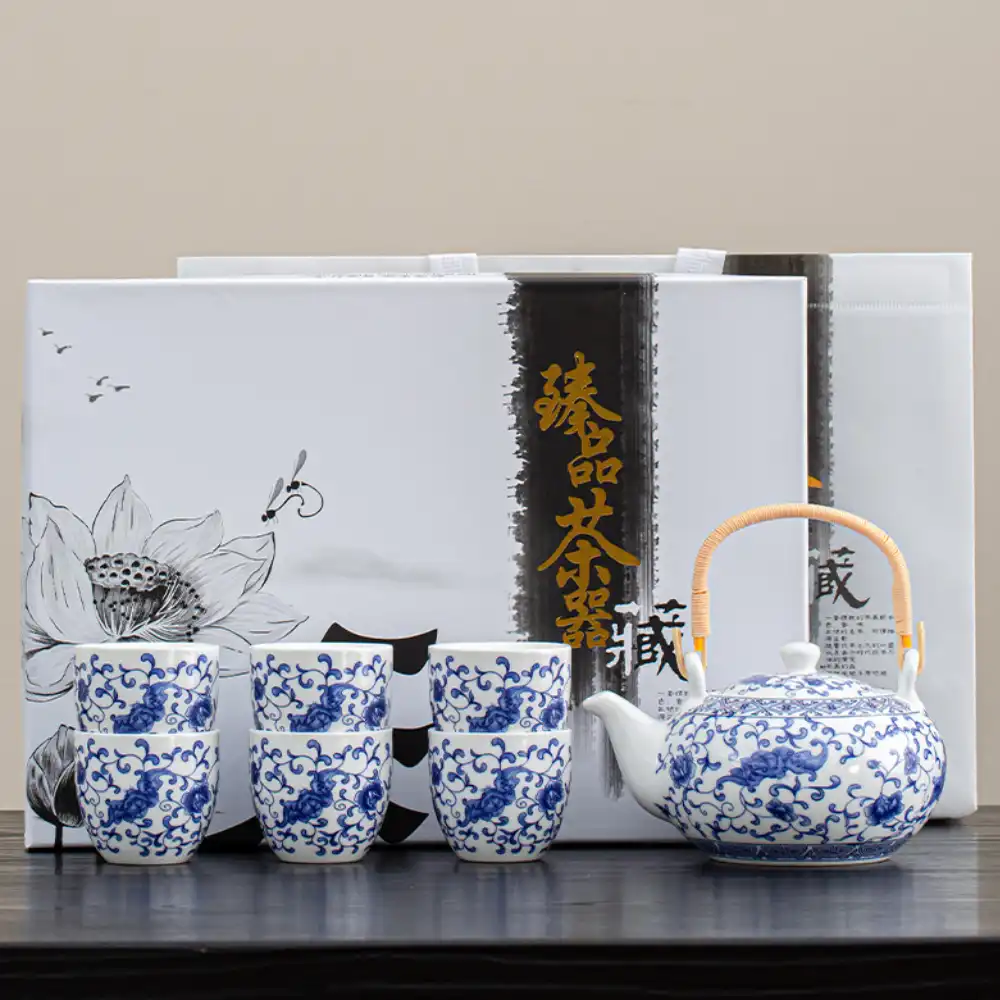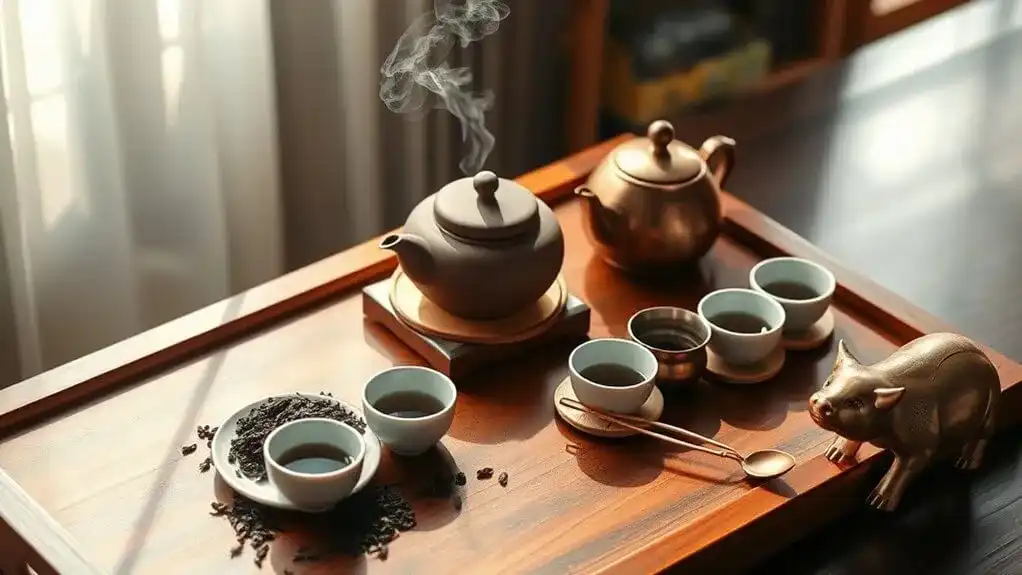The Tea Horse Road emerged during China's Tang Dynasty as tea's popularity exploded, creating an essential trade network between China and Tibet. Chinese merchants exchanged their prized tea leaves for Tibet's powerful warhorses, establishing routes that crossed treacherous mountain terrain and linked diverse ethnic communities. This ancient pathway didn't just facilitate commerce – it became a cultural crossroads where religions, customs, and traditions merged. The story of this remarkable trade route reveals how a simple leaf transformed an empire.
Key Points
- Tea's popularity during the Tang Dynasty sparked a formalized trade network between China and Tibet for horses and other commodities.
- China established a specialized government agency during the Song Dynasty to regulate and oversee tea-horse trade operations.
- The demand for tea in Tibet and warhorses in China created a mutually beneficial exchange system along challenging mountain routes.
- Pack horses and tea porters transported heavy loads across treacherous terrains, making the trade route possible despite geographic obstacles.
- The Tea Horse Road facilitated cultural exchange among 20 ethnic communities while establishing vital economic connections across regions.
The Birth of a Trade Empire: Origins of the Tea Horse Road

While tea has become synonymous with Chinese culture today, it wasn't until the Tang Dynasty (618-907) that this aromatic beverage sparked one of history's most remarkable trade networks. The story began when Tibetans developed a strong interest in tea, leading to the establishment of tea-horse trade markets across the region.
As tea cultivation flourished in Yunnan and Sichuan, a fascinating trade dynamic emerged. China's imperial courts sought strong warhorses for military purposes, while Tibet had an increasing appetite for tea. This mutual need transformed simple market exchanges into an extensive network of trade routes. The Tang and Song dynasties witnessed the formal development of these pathways, which would eventually connect remote regions and foster economic growth. During the Song Dynasty, a specialized government agency was established to oversee and regulate the growing tea-horse trade. The ancient trade network reached from the Jinsha River valleys through the highest peaks of the region. Merchants and traders had to navigate through steep mountain paths that posed constant challenges and risks. The network gradually expanded from localized markets into what became known as the Tea Horse Road.
Mountains and Markets: Mapping the Ancient Routes

Stretching across some of Asia's most challenging terrain, the Tea Horse Road carved its way through the formidable Hengduan mountain range, connecting the tea-rich provinces of Sichuan and Yunnan to Tibet's distant markets.
The mountain challenges were immense, with traders maneuvering narrow zigzagging paths and crossing rapid rivers at high elevations. These natural barriers made wheeled transport impossible, forcing reliance on pack horses that left deep hoofprints still visible in stone slabs today. Tea porters carried loads over their body weight using metal-tipped staffs for balance. Brave muleteers faced perilous conditions while transporting their precious tea cargo across these treacherous mountain passes.
The route's market dynamics centered around key trading posts like Kangding, where merchants exchanged goods and often switched transport methods. Simao and Pu'er served as crucial starting points in Yunnan, while Lhasa acted as the ultimate destination. This network of trading posts didn't just facilitate commerce – it sparked cultural exchanges that would shape western China's development for centuries. The route played a vital role in spreading Buddhism from India to China and Tibet through these established trading networks.
Beyond Tea and Horses: The Trading Network's Key Commodities

The Tea Horse Road carried far more than its namesake commodities. The salt trade played a significant role, with government-controlled distribution making it a valuable currency across regions. Traders transported essential medicinal herbs, including valuable cordyceps and velvet antlers, which were highly sought after in Chinese medicine.
Local specialties enriched the trading network, from mother-of-pearl and precious stones to iron and porcelain. Luxury items like gold, silver, and ivory flowed between China and Tibet, while practical goods such as silk, textiles, and food supplies sustained local economies. The complex supply chain relied on strategic way stations and market towns, where caravans could rest and exchange goods. Pack horses navigated the challenging mountain paths, carrying diverse products that reflected the rich cultural exchange between regions. The thousand-mile trade route stretched from Sichuan province through the Tibetan plateau to Lhasa, creating a vast commercial corridor.
Cultural Crossroads: Exchange Along the Tea Horse Road
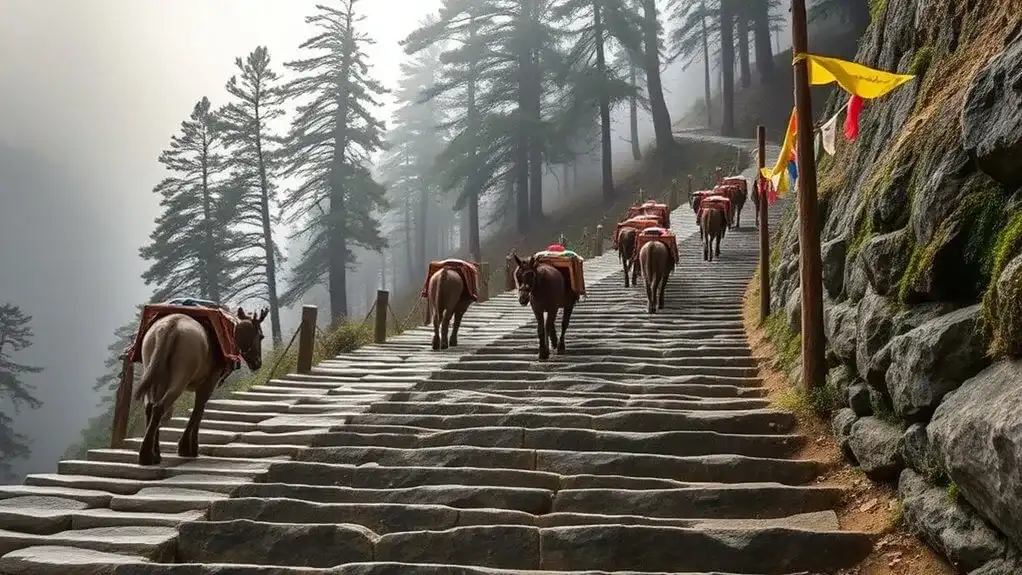
Beyond its role as a bustling trade artery, the Tea Horse Road served as a vibrant cultural conduit that connected diverse ethnic groups across China, Tibet, and surrounding regions. This remarkable network fostered cultural diffusion among approximately 20 different ethnic communities, leading to profound exchanges in religion, art, and daily life.
Modern tourists can now explore these cultural connections while staying in lofted cabin accommodations, experiencing firsthand the historical ambiance of the ancient route. The route's impact on artistic exchange was particularly significant, as new styles and techniques flowed freely between regions. Buddhism traveled from India to China and Tibet, while culinary practices, languages, and social customs merged and evolved. Communities along the path provided essential services and preserved traditional skills, from tea processing to textile weaving. This rich cultural intermingling created a lasting legacy that continues to influence the region's cultural landscape today.
Legacy and Preservation: The Tea Horse Road Today
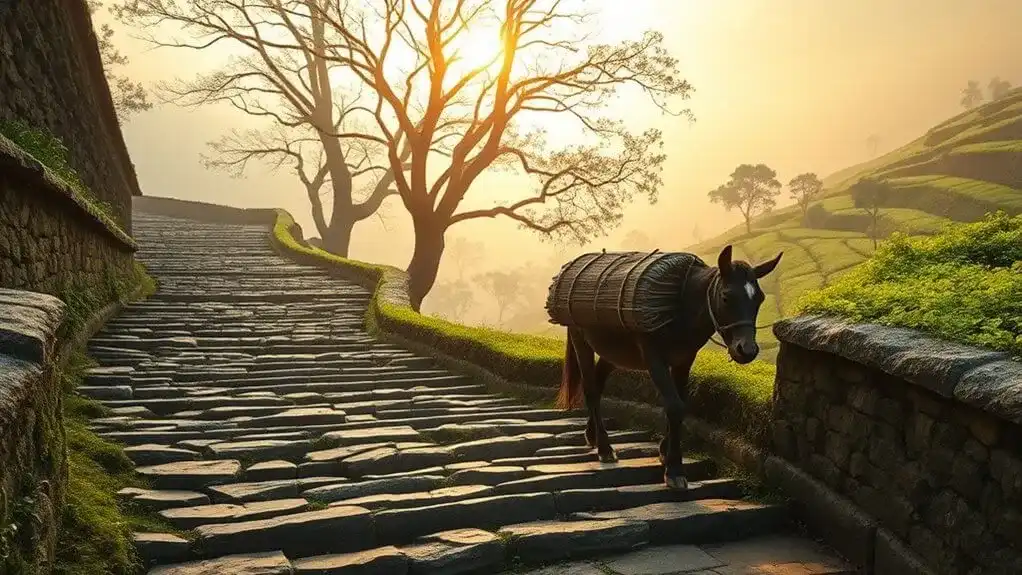
Modern preservation efforts have transformed the once-abandoned Tea Horse Road into a thriving symbol of cultural heritage. The development of the AAAAA Class Ancient Tea Horse Road Tourist Attraction in Pu'er exemplifies this cultural preservation, featuring cable car sightseeing and ancient road source tracing areas across 5,000 Mu of land. The Yemei Wetland Area offers stunning natural scenery that complements the historical attractions.
While modern highways like the Sichuan-Tibet route led to the ancient path's abandonment, tourism development has breathed new life into this historical trade route. Visitors can now explore well-preserved archaeological findings, stone ruts, and aged altars that tell the story of Sino-Tibetan relations. The route's legacy lives on through carefully curated exhibitions and interactive experiences, allowing guests to walk the ancient paths and visit tea gardens while contributing to local economies and maintaining the region's rich cultural heritage.
Conclusion
While much of the Tea Horse Road lies dormant today, whispers of its legacy echo through China's modern trade initiatives. Ancient pathways that once carried tea and horses now host adventure seekers and cultural preservationists. But there's something more intriguing beneath the surface – as China revives portions of these historic routes, one can't help but wonder if the ancient network holds secrets yet to be discovered.
